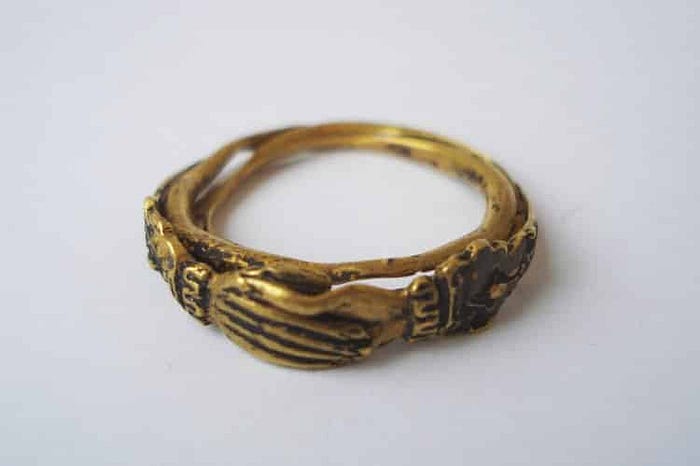Member-only story
Fascinating Facts: Fede Rings
Fealty rings from the Middle Ages

 We are all familiar with the tradition of the wedding ring, even if it’s not directly part of our culture. This symbol has permeated society for centuries and has some very interesting origins. Today, I would like to focus on the concept of fealty rings.
We are all familiar with the tradition of the wedding ring, even if it’s not directly part of our culture. This symbol has permeated society for centuries and has some very interesting origins. Today, I would like to focus on the concept of fealty rings.
You can find wedding rings in ancient traditions like those of the Egyptians, the Romans, and the Greeks. The circle shape of the ring goes back to the meaning of the ouroboros (the serpent that eats its own tail), no beginning and no end, eternity. We see these rings used through time not only as symbols of status and personal identity — in the case of signet rings — but also as a visible way to show commitment to another.
During the Middle Ages, in the 12th century, in Europe, the fede ring rose in popularity. Here’s what you need to know about it!

Fede means loyalty, faith, and trust in Italian and this is the main meaning of this ring design. The name and imagery also come from the Italian mani in fede (hands clasped in faith). This kind of ring shows two hands clasped together at the bezel and represents the joining of the couple’s hands in the marriage ceremony. During the Middle Ages, these rings were often traded as wedding rings or as a symbol of faithful love.
The act that inspired this design, the joining of the hands of the couple during a marriage ceremony, goes back to ancient Rome and was called dextrarum iunction. It is important to refer that this is part of the ancient Roman marriage ceremony, as the institution of marriage itself for the Romans did not only change over time but also had some very particular characteristics. Honestly, Roman marriage ceremonies are material for their own article!
Gifts were a living and essential part of Medieval romance literature. The giving of rings, brooches, and belts between knights and ladies was a symbol not only of love and loyalty but also of…
